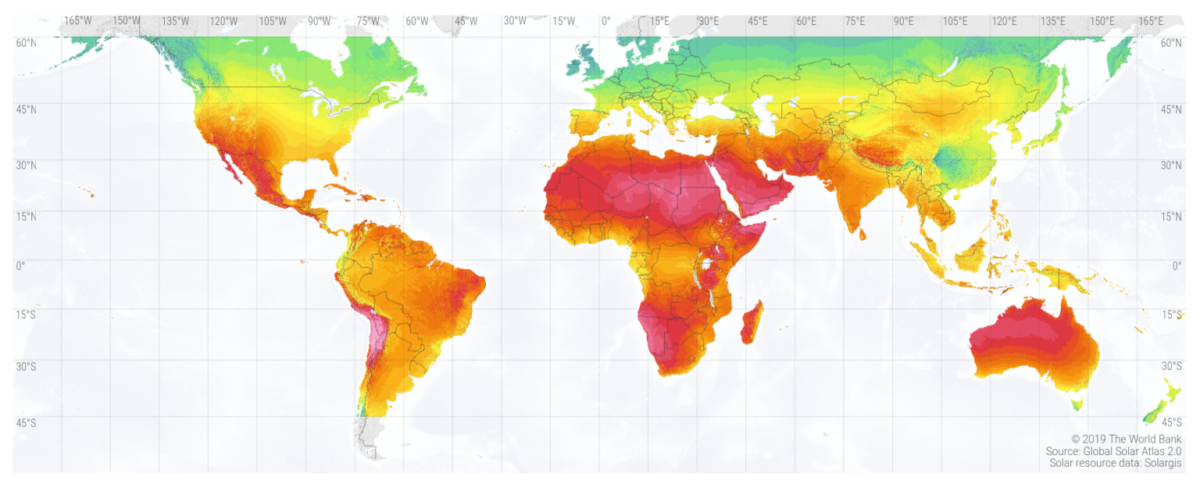From pv magazine Global
An international research team has investigated how overirradiance (OI) may impact the performance of PV installations at low- and mid-latitudes and have found several issues may arise when OI conditions last more than one minute and at ambient temperatures above 30 C.
These events may affect the operating performance of photovoltaic plants, the stability of the electrical grid, and the efficiency of inverters. These effects are due to the increase and drastic fluctuation of irradiance, which can vary by more than 900 W/m2.
“To our estimation, the industry in the last decades, the PV industry, has been neglecting overirradiance, possibly due to unawareness or the belief that these events are rare and isolated,” the research’s lead author, Marco Zamalloa, told pv magazine. “We ourselves were not aware of such events before seeing them in our irradiance data a few years ago. However, since we are relatively new to this topic, we cannot say with absolute certainty whether some PV energy industry branches and project developers now consider these overirradiance conditions.”
According to Zamalloa, OI conditions are common and occur everywhere with cloud formation. “They can be imagined as a wandering focal point of a magnifying glass,” he further explained. “With the movement of the cloud, it wanders over the earth’s surface. We become only aware of the irradiance enhancement when the focal point passes a sensor.”
In the paper “Overirradiance conditions and their impact on the spectral distribution at low- and mid-latitude sites,” published in Solar Energy, Zamalloa and his colleagues analyzed the spectral distribution of OI conditions in Lima, Madrid, and Berlin using spectroradiometers, tilt and azimuth angles, and sampling interval. They measured, in particular, the spectral distribution of solar irradiance in W/m2/nm, ranging from 350 to 1050 nm, via two years of measured spectral data.
Through their analysis, they found that OI conditions cause red-shift and cloud a blue-shift of the clear-sky spectrum. “The red-shift caused by overirradiance conditions results in different spectral distributions, depending on the average photon energy of the clear sky,” they explained, adding that the spectral red-shift indicates a cloud-enhancement of the direct normal irradiance.
“We believe the photovoltaic industry requires a quantitative evaluation of the impacts of overirradiance on the operation of photovoltaic systems, which are just beginning to be carried out,” co-author Jan Amaru Töfflinger said. “The sudden change in irradiance makes it necessary to improve the response time of the inverters and the MPPT algorithm, both to take advantage of the increase in irradiance and to avoid heating the cables, fuses, and photovoltaic modules due to the high current generated by the overirradiance events.”
Töfflinger also stressed that overirradiance conditions are frequent in Brazil and can have technical and economic effects on photovoltaic plants. “We have contacted colleagues from Brazil, where, so far, most papers have been written regarding the impact of overirradiance conditions on PV plants,” he concluded. “They say they are quite aware of the potential risks and are taking precautions in sizing the inverter and protective fuses.”
The research group is formed by scientists from the Pontificia Universidad Católica del Perú, Germany’s Helmholtz-Zentrum Berlin für Materialien und Energie GmbH, and the University of Jaén in Spain.
This content is protected by copyright and may not be reused. If you want to cooperate with us and would like to reuse some of our content, please contact: editors@pv-magazine.com.









By submitting this form you agree to pv magazine using your data for the purposes of publishing your comment.
Your personal data will only be disclosed or otherwise transmitted to third parties for the purposes of spam filtering or if this is necessary for technical maintenance of the website. Any other transfer to third parties will not take place unless this is justified on the basis of applicable data protection regulations or if pv magazine is legally obliged to do so.
You may revoke this consent at any time with effect for the future, in which case your personal data will be deleted immediately. Otherwise, your data will be deleted if pv magazine has processed your request or the purpose of data storage is fulfilled.
Further information on data privacy can be found in our Data Protection Policy.